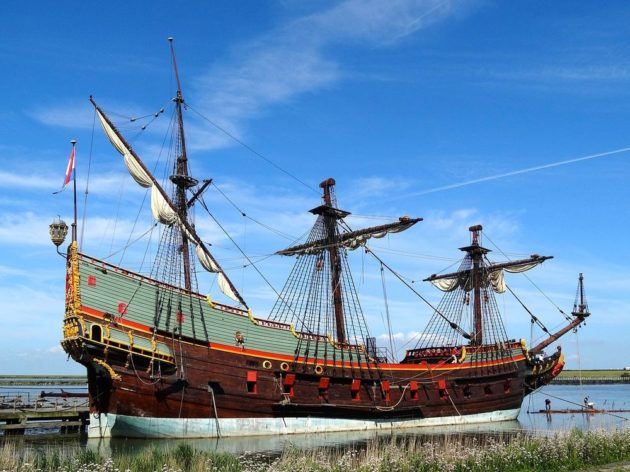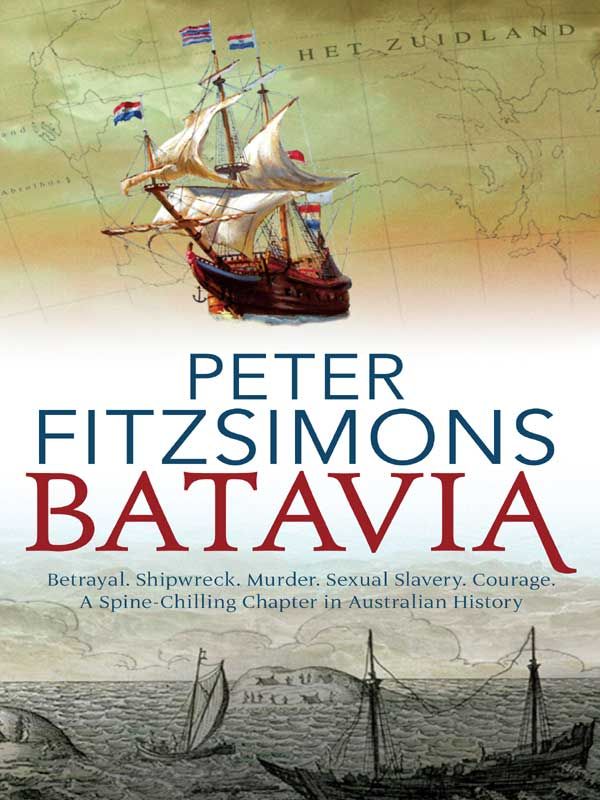
I’ve recently finished reading a book about a historical event, which, until I stumbled upon the book, I had never heard of. I’m sure many BFD readers have heard of it, but for those who may not have, I decided to write this post which started out as a book review. I believe that in a roundabout sort of way, it’s relevant to New Zealand in 2019, almost 390 years later. A book that can get me thinking (a very difficult if not impossible task, many of my late teachers would have agreed), is a rare and wondrous thing.
The book is “Batavia” by Peter Fitzsimons, published in 2011, and it tells the story of the shipwreck of the Batavia, the flagship of the Dutch East India Company, (Vereenigde Oost-Indische Compagnie), or VOC for short. This happened in 1629. The events that took place after the shipwreck are what makes this story such a fascinating one.
To briefly set the scene, the Batavia was a state-of-the-art ship of its day, 650 tons in weight, 56.6 metres in length, 55 metres maximum height, beam 10.5 metres, and a draught of 5.1 metres.
While the Captain, Jacobsz, was in charge of the ship itself, the overall leader of the voyage was Commandeur Francisco Pelsaert, the Upper Merchant (supercargo) and an esteemed VOC officer.
The fleet of 8 vessels sailed on 27th October 1628 bound for Batavia (Java) in the Dutch East Indies. A total of 322 people were on board. The Batavia carried considerable treasure. During the voyage, the ship’s Captain, Ariaen Jacobsz, together with Jeronimus Cornelisz, an under merchant of the VOC, agreed to mutiny and seize the ship and recruited a small number of co-conspirators. Disaster struck, however, before they could carry out their plan.
On 4th June 1629, the ship struck a reef on what are now the Wallabi Islands, in the Houtman’s Albrohos group, about 100 kilometres off the coast of Western Australia. About 40 people drowned, but the rest managed to get ashore onto a couple of very small, low islands in the group. The captain had deliberately separated the Batavia from the rest of the fleet.
As there was no water on the islands, and they relied on what they could salvage from the wreck, as well as rainwater, Captain Jacobsz and Commandeur Pelsaert took some other crew in the ship’s longboat and went in search of water, which they failed to find on any of the other islands. They then sailed for the West Coast of Australia in search of water, not realising that this was a very arid area also. Failing to find any, they then sailed for Java in the hope of mounting a rescue mission from Batavia.
The survivors thought that they had been abandoned. Jeronimus Cornelisz and some others remained on the wreck for some days, but when it broke up, they were forced to swim for shore.
Cornelisz made it to the larger of the adjacent islands, which had been named Batavia’s Graveyard, (today, Beacon Island), where most of the survivors were found.
Cornelisz discovered that a council had been formed, but there was no real leadership on it, and as the now senior survivor in rank, he at once proposed that he be made the leader of the council, and this was accepted by the others.
Very soon, he replaced the other members of the council with his own men, all of whom were part of the mutiny plot.
From items salvaged from the ship, they were able to erect tents and obtain supplies of food and water barrels which floated ashore. Jeronimus Cornelisz made the largest tent his own and quickly commandeered all food and water supplies to distribute as he saw fit, with the help of his enforcers. Of course, these men, the inner party if you like, lived in comparative luxury.
One of his first acts was to disarm all but his own people, thus rendering the people defenceless. (Starting to sound a bit familiar?) Now he had control of all resources and weaponry. He quickly realised that the resources available were insufficient for the large number of survivors on the islands.
He then ordered a group of soldiers led by Wiebbe Hayes, to West Wallabi Island, one of the larger islands in the group, ostensibly to find water, while believing that there was none there. He then abandoned them on the island, expecting that they would quickly die of thirst. (They did actually find a good source of water, as well as wallabies to eat).
He realised that any of the survivors who were a potential threat to his plans (which were to kill the crew and capture any rescue ship which came, and escape in it), had to go. These were murdered quickly by his henchmen on false pretexts such as theft. He then began a systematic elimination (a reign of terror) of the “excess” population of the island, including children and all but a few women.
This is to me, a picture of how all tyrannies are formed. Giving in to tyrants and allowing them to make small advances, encourages larger and more frequent excesses. Before they knew what was happening, the people were enslaved and living in fear.
Can it happen here? I say, yes it can, as in Venezuela, as a recent example. We need to resist every, even seemingly insignificant, chipping away at our freedoms. We have plenty of Jeronimus Cornelisz wannabes here. We need more Wiebbe Hayes’s (one of the real heroes of this story). I hope we can find one soon.
This is necessarily a very brief summary of the story. (It ended badly for Jeronimus). Peter Fitzsimons’ book is a very readable and fascinating account of this event. I also recommend Batavia’s Graveyard by Mike Dash. It’s a harder read, but more detailed. The Batavia Journal of François Pelsaert is also available as a PDF document.


